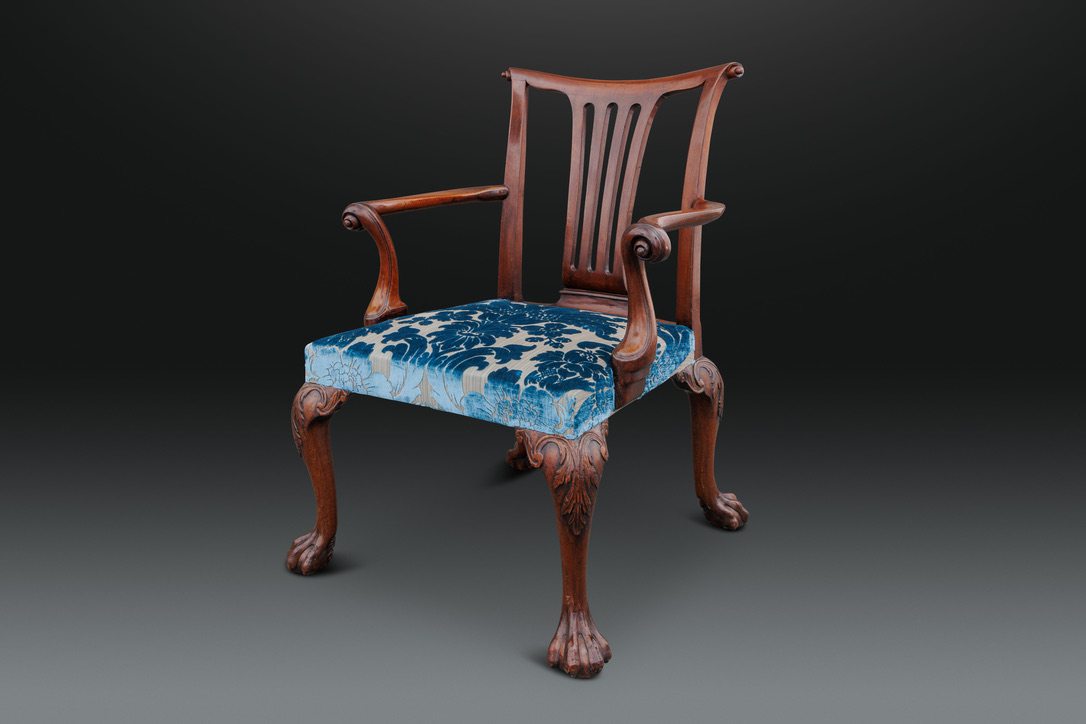
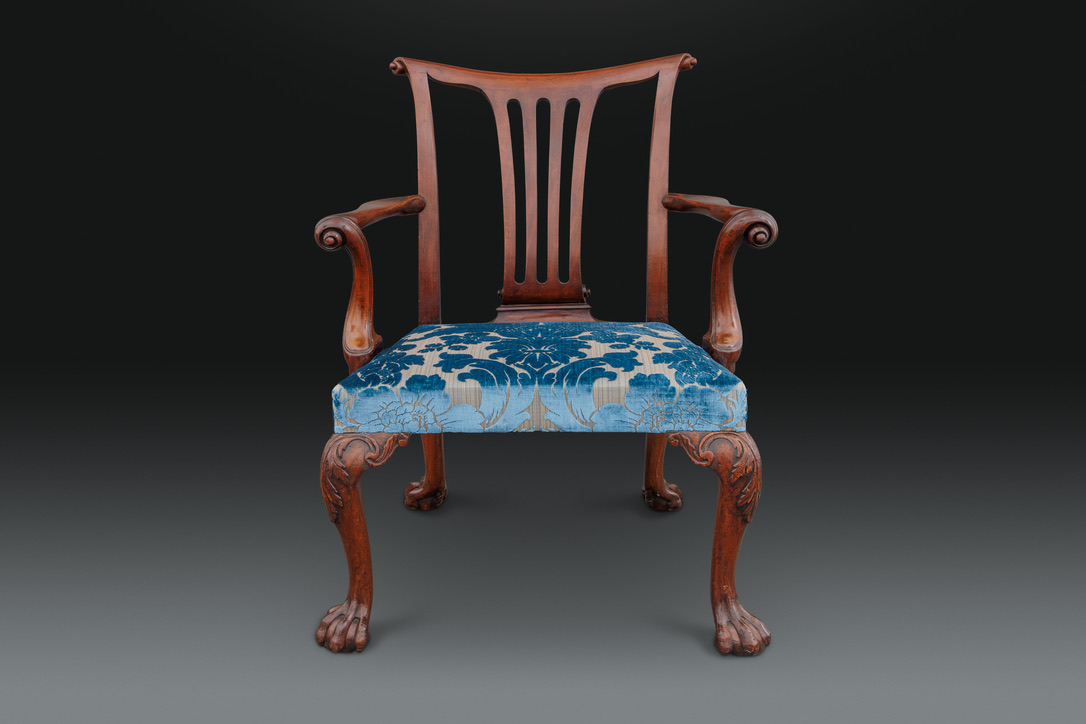
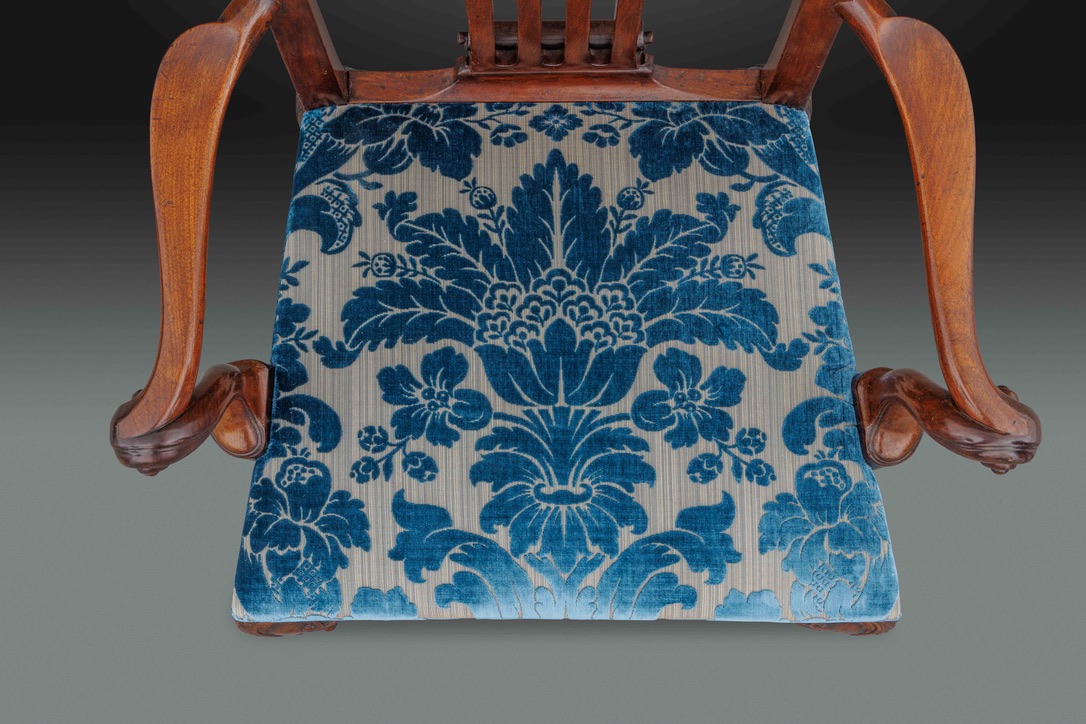
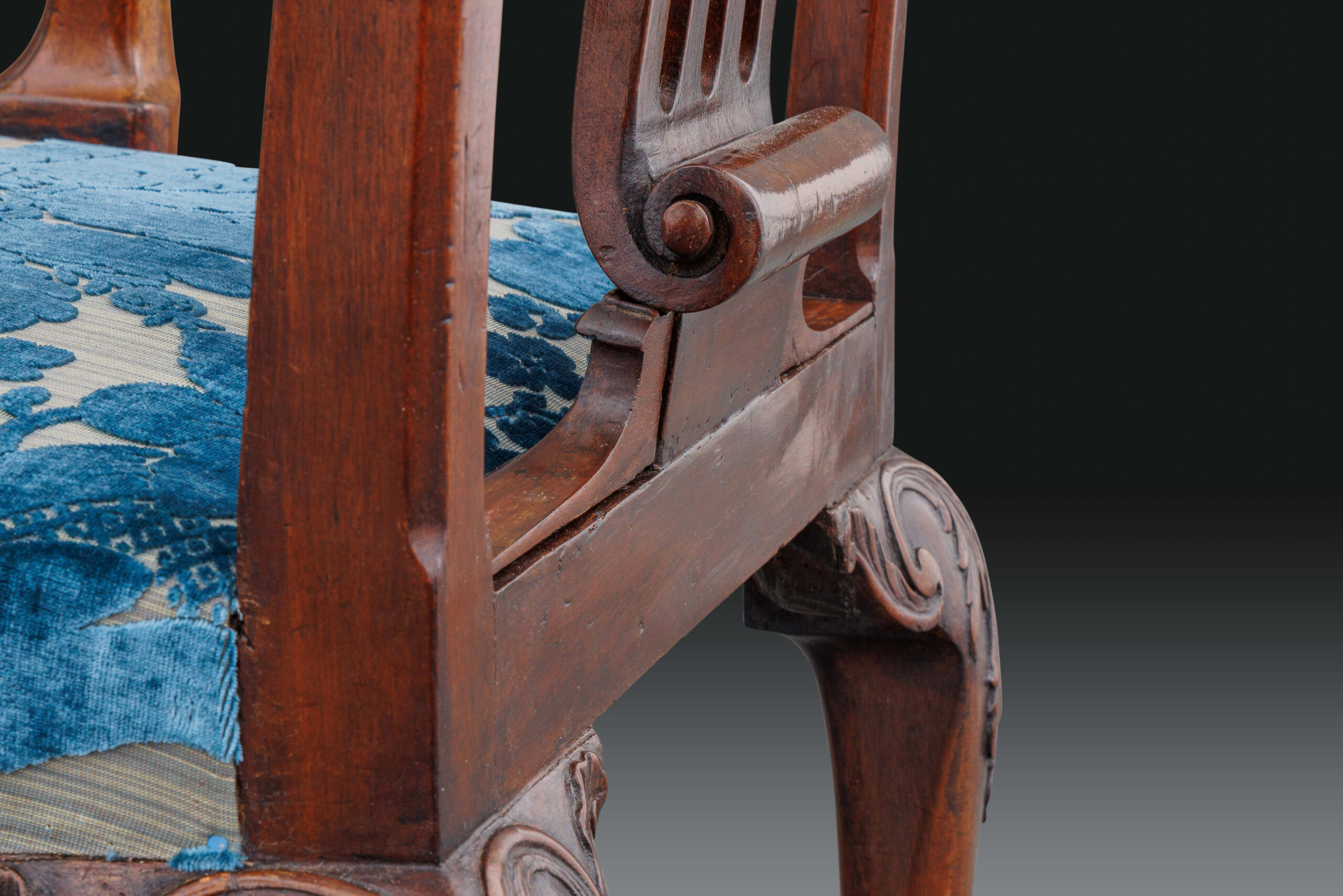
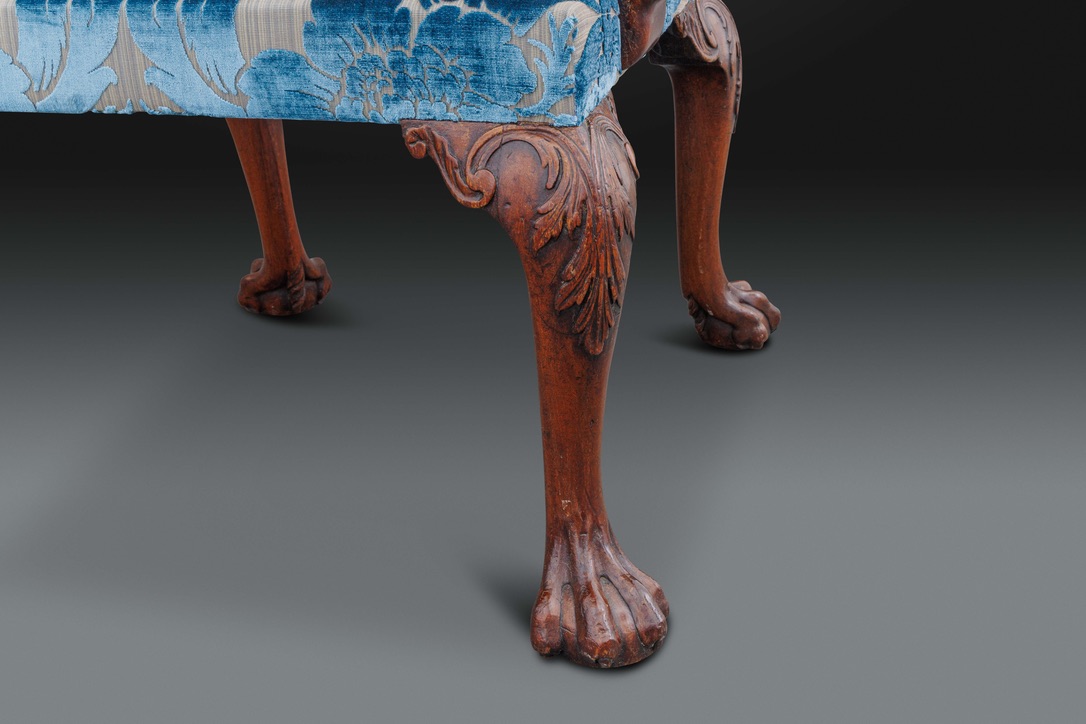
$65,000.00
27 ins wide, 28 ins deep and 37 1/4 ins high; Seat 18 1/2 ins high
For questions regarding viewing, shipping, and anything else,
contact us at: [email protected]
Provenance
Possibly made for Mellerstain House in Scotland as part of the Palladian furnishing scheme there
A chair of this same model, possibly this one, was sold by Ronald Phillips Ltd and is currently illustrated in the Notable Sales section of their website
Literature
A chair of identical model, still in the house today, was illustrated in the gallery at Mellerstain in Country Life, 13th of November 1915 p.654
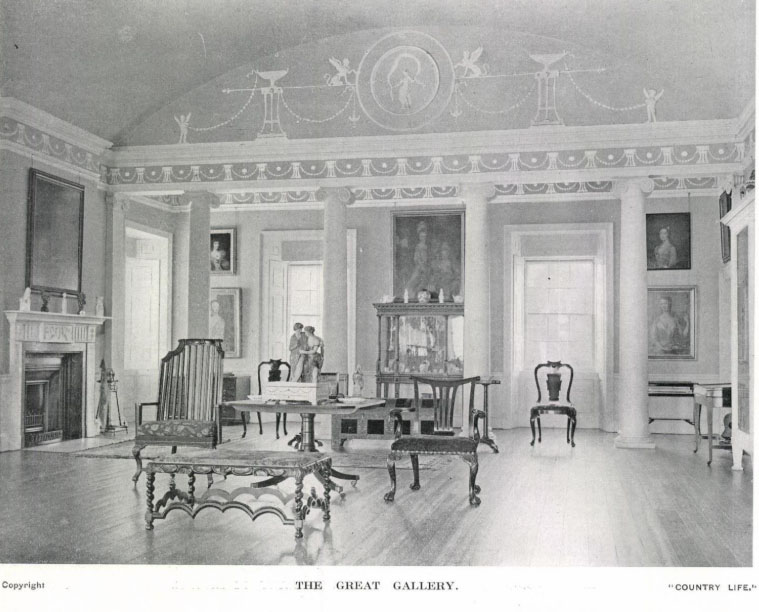
This fine chair is particularly sculptural in nature due to its unusual proportions, fine carving and a myriad of distinctive decorative features. It stands on four finely carved cabriole legs with claw and ball feet. Unusually the back legs are fully finished as well as those on the front, a feature always found on library armchairs and upholstered side chairs of the finest quality but rarely encountered on armchairs of this sort. The arms are of the attractive outscrolling type, a feature particularly associated with the Palladian designers in England such as Henry Flitcroft and, most famously, William Kent. Finally the back splat is attractively curved to fit the back of the user and the top rail has paper scroll corners.
A chair of this same model was illustrated in Country Life in Mellerstain House in 1915.
Although Mellerstain was a major Robert Adam commission and is thus well known today as a neoclassical masterpiece, there was an earlier Palladian scheme. The work on this scheme started in the 1720s and it is very likely that the chair in the photograph, which is still in the house to this day, was supplied as a later part of this scheme. It is therefore also likely that our chair was part of this same commission.
The present chair also bears close resemblance to a number of important chairs in famous stately home collections. A set of chairs of very similar character was part of the furnishings at Montacute in Somerset until sold by the family in 1929. The armchairs from the suite were featured in the sale advert, printed in the Burlington Magazine, in November of that year and reproduced below.
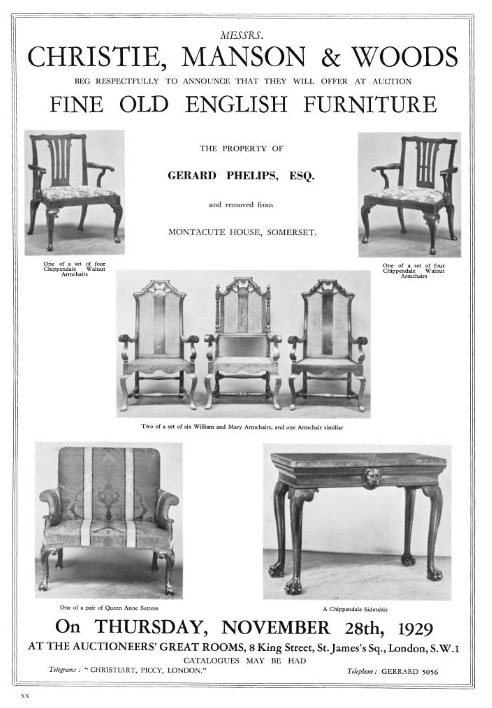
These chairs are generally less sophisticated than the present example, having simpler arms, less carving to the legs and plain seat rails rather than the stuff over seats on the present piece. However the proportions and basic design of these chairs is very similar to our example.
Of equal interest is a suite of seat furniture from Horsley Towers in Surrey, dispersed by the family at auction in 1926 and advertised in Connoisseur in October of that year by the auctioneers Knight, Frank and Rutley.
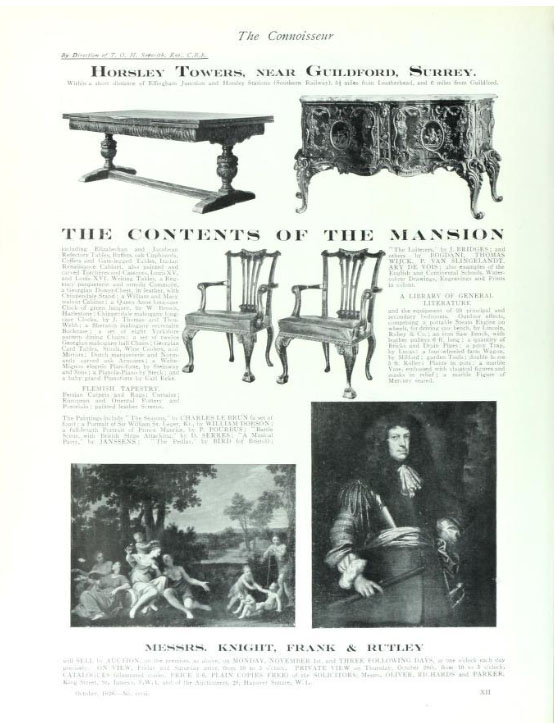
The Dictionary of English Furniture features a chair from Ammerdown House in Somerset (revised edition Vol. 1, fig. 136) which has a paper scroll top rail that relates to the present chair.
It is also worth noting a suite of upholstered side chairs, formerly in the India Office in London and illustrated in Country Life on the 16th of February 1929. These chairs have very similar scrolling arms to our piece. The stuffed backs and the dolphin front feet, however, are very different.
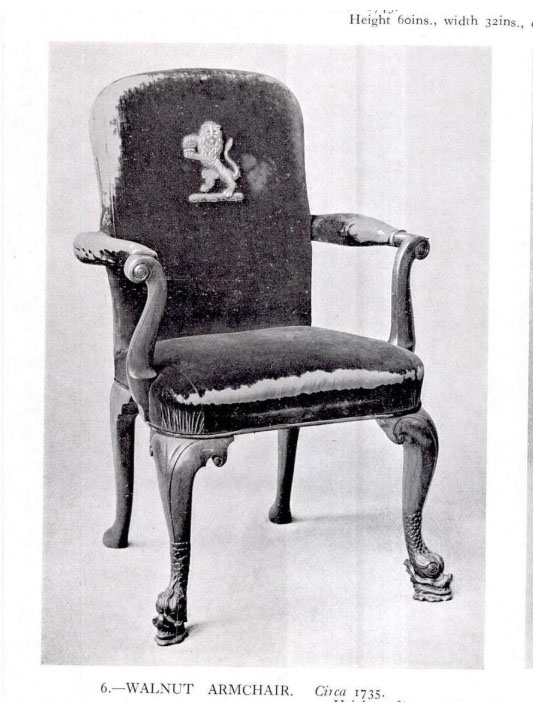
Additionally, a pair of chair back settees are extremely similar style to our chair were advertised by the dealer J. W. Needham of Manchester in Connoisseur in January 1921. The splats and arms on these settees are so similar to our chair that it is likely that they were the products of the same workshop but the simpler feet on these pieces mean that they cannot have been supplied en suite.
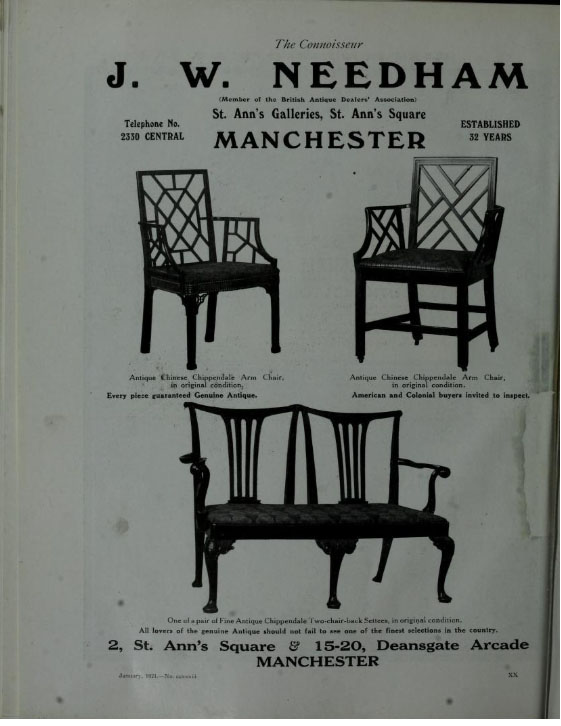
Another chair back settee with a near identical back splat to ours but with shell carved knees and simpler arms (not outscrolling) was at Basset Down in Wiltshire and illustrated in Country Life on the 13th of October 1928. This piece was likely commissioned for the house though sadly no documentation relating to the commission seems to have survived.
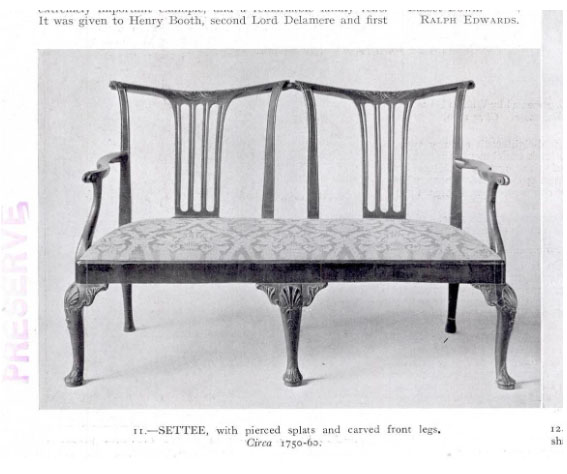
In the past, chairs of similar design to our piece have been attributed to the maker William Bradshaw on the basis of a set of chairs formerly at Rousham in Oxfordshire and sold most recently by Christie’s in 2014. These chairs and ours share several stylistic features, particularly the type of back splats.
https://www.christies.com/lot/lot-a-set-of-nine-george-ii-mahogany-5789736?&lid=1&sc_lang=en
William Bradshaw is believed to have supplied the Rousham set (although the documentation is inconclusive) and, as a result, his name has become attached to other important chairs of this character and period. In our opinion, however, the more likely maker of this chair is the Clerkenwell cabinetmaker Giles Grendey. A set of labelled chairs by Grendey owned by Christopher Gibbs Ltd with a closely related splat design was illustrated by Christopher Gilbert in his The Pictorial Dictionary of Marked London Furniture 1700-1840, p.242, fig.435. These chairs also have similarly carved front knees to the present example and something approaching the distinctive rake of the back legs as well.
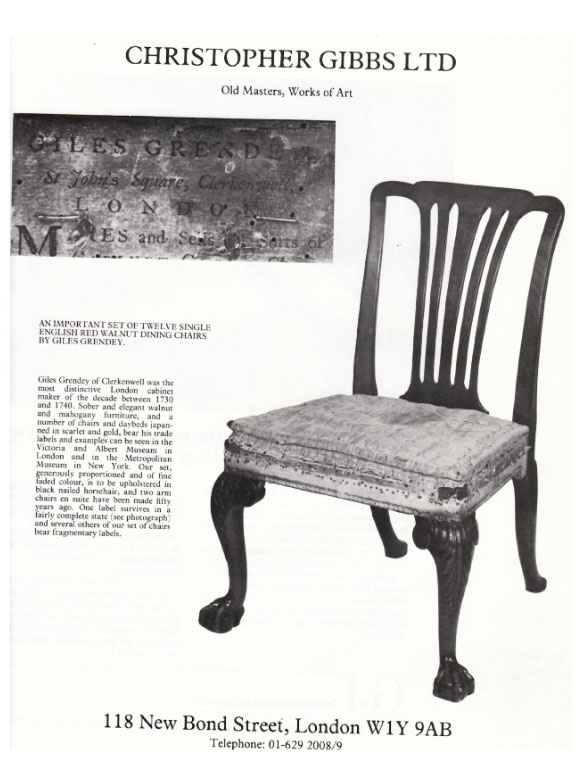
The aforementioned rake of the back legs, and the fact that they are fully carved, is also something of a trademark of the upholstered side chairs labelled by or attributed to Grendey such as this example from Nostell Priory in Yorkshire.
https://www.nationaltrustcollections.org.uk/object/959712
It is also worth comparing the carving on the knees of our chair to the chairs supplied by Grendey to the Hoare family at Stourhead in 1751 as it is remarkably similar in both design and execution.
https://www.nationaltrustcollections.org.uk/object/731628
A side chair of identical design to our armchair was on the art market in 2012 and was also attributed to Grendey.
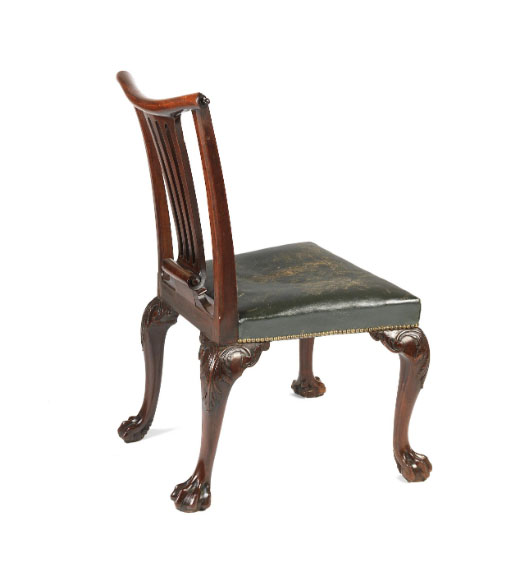
On the basis of all of this, we feel that an attribution to Grendey is justified. Regardless of the maker, however, this is a chair of superlative quality and extremely refined design. It was made at a time when fashions were beginning to shift from the Palladian to the rococo and the chair features certain elements of both styles, the carving being of a more rococo character but the scrolling arms in particular harking back to William Kent designs of c.1730. Transitional pieces of furniture are always of high interest to collectors and this chair is certainly of great interest both in an academic context and because of its high degree of aesthetic appeal. A very interesting piece.
Research and essay by Christopher Coles.




